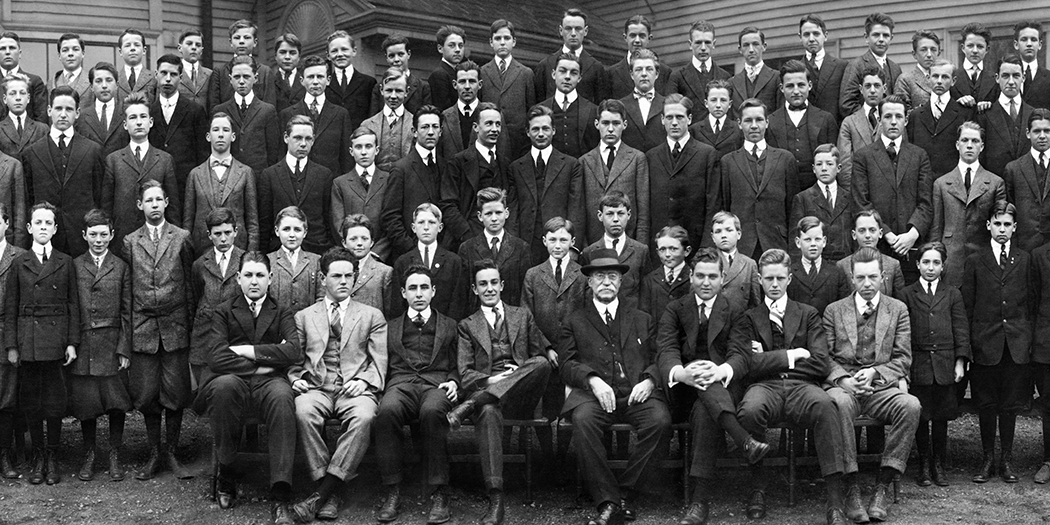Rooted In History
The Roxbury Latin School was founded in 1645, in the reign of King Charles I, by John Eliot. Eliot was a church teacher, and he was later renowned as the “Apostle to the Indians” and the translator of the Bible into the Algonquin language. His vision was “to fit [students] for public service both in church and commonwealth….”
Modeled on the English grammar school, the school was dedicated to giving instruction in the classics and producing Christian citizens. The goal of Christian citizenship was to be pursued by three means: an education in [Latin] literature, training in moral character, and lessons in religious or spiritual understanding. Eliot persuaded nearly every Roxbury landowner to underwrite the school’s costs. That first year, fewer than ten students attended, including Eliot’s own nine-year-old son.
Younger boys studied preparatory subjects—reading, writing, and arithmetic—while older students moved on to Latin grammar, a prerequisite for entrance to Harvard, the Massachusetts Bay colony’s only college.
The school was open to all who wished to attend. Subsequently, Eliot convinced those founding families to defray tuition for students whose families could not afford donations, and later, the trustees granted free admission to all applicants from Roxbury. Today financial aid is decided solely on the basis of need instead of geography.
William Coe Collar, Headmaster from 1867 to 1907 and commonly recognized as the Second Founder, quadrupled the size of the student body and maintained that the school’s greatness lay in its ideals of character training. His accomplishments include:
- Hiring specialized teachers in physics, chemistry, modern history, and German (subjects then
required for Harvard admission). - Advancing Roxbury Latin in the national educational spotlight through his own and his
colleagues’ textbooks and through pioneering methods in teaching science. - Introducing extracurricular activities: a school newspaper, student dramatic productions, and athletic teams in football, baseball, track, and hockey.
From 1860 until 1927, Roxbury Latin resided in a small building on Kearsarge Avenue in Roxbury. In the mid-1920s, a 50-acre estate in West Roxbury was procured, and the School moved to its present campus in 1927. The eminent architect William Perry of Perry, Shaw & Hepburn designed the new school building; the firm would later—in part due to its success at Roxbury Latin—be entrusted with the restoration of Colonial Williamsburg. Thanks to the generosity of the school’s alumni and benefactors, Roxbury Latin’s physical plant has quadrupled in size over the past 20 years, and adjoining acreage for new fields was acquired.
For a comprehensive history of The Roxbury Latin School, read Schola Illustris: The Roxbury Latin School 1645-1995, by F. Washington Jarvis, who served as Roxbury Latin’s tenth Headmaster, from 1974 to 2004. The book was published on the 350th anniversary of the school’s founding, in 1995. In 2020, the school celebrated its 375th anniversary with a series of events and publications both commemorative and celebratory, nodding to the school’s founding, its traditions and history, its people, and to its vibrant life and evolution over 375 years. The celebration included a “Men of RL” alumni series which brought nearly 20 alumni to campus to participate in performances, exhibits, panel discussions, Halls, and classroom visits. These graduates represented diverse professional and personal paths—all examples of excellence, leadership, or service. The anniversary also included the publication of Tony Jarvis’s final book, Men of Roxbury.

John Eliot

Eliot’s Church in Roxbury

William Coe Collar

Sixies in 1908 at the Kearsarge Avenue schoolhouse

The new campus in W. Roxbury in 1930

